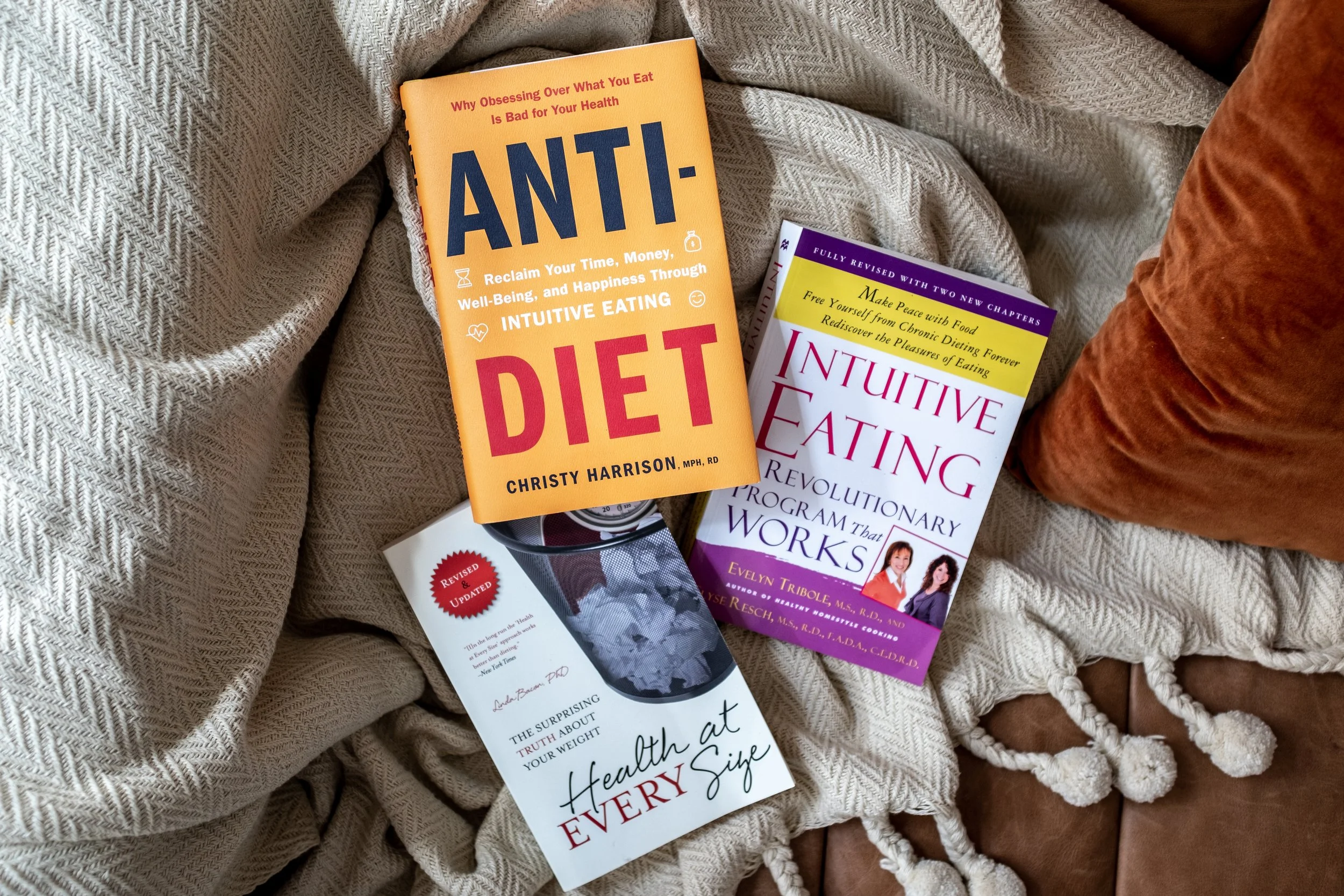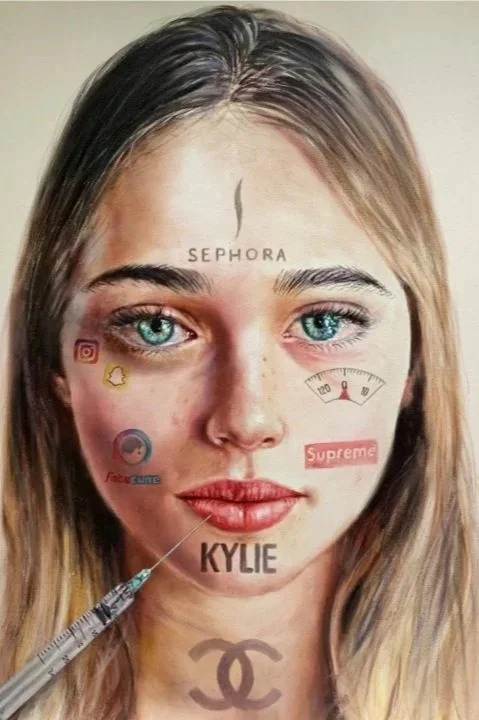Disordered Eating, Body Image
“We all want to be happy, accepted, and loved, which is what diet culture promises we’ll achieve through thinness and “perfect” eating.”
― Christy Harrison“Intuitive eating is not a diet, but a way of life that honors your body's natural cues and allows you to eat in a way that is both nourishing and satisfying”
-Evelyn Tribole and Elyse Resch
Yet today there’s simply too much noise around the issues of food, hunger, and eating for us to listen to our own bodies. We live in a world that’s decided to define food as “good” or “bad,” a world that encourages us to ignore our hunger and fullness signals in favor of continually seeking out that Holy Grail of thinness, or to use food to fill needs that have nothing to do with sustenance.
-Evelyn Tribole and Elyse Resch

What is disordered eating?
Disordered eating encompasses a range of unhealthy eating behaviors and attitudes toward food, body image, and weight, which can lead to significant physical and emotional distress. In a society heavily influenced by diet culture, individuals often face unrealistic standards of beauty and restrictive notions of health that can perpetuate harmful beliefs about food and body worth.
Why is disordered eating so common?
How is it different that an eating disorder?
Diet Culture is a pervasive belief system that promotes weight loss and thinness as the primary indicators of health and success. It often encourages restrictive eating, intense exercise regimens, and a preoccupation with body size, leading to shame and guilt around food choices. This culture can create a toxic environment where individuals feel pressured to conform to narrow definitions of health and beauty, contributing to the development of disordered eating patterns.
The beauty standard and diet culture our interrelated and both harmful societal forces working against mental health on a mass level. The relationship between beauty standards and diet culture is intricate and often detrimental to mental health.
Diet culture promotes various restrictive eating habits and often encourages a cycle of weight loss and regain, which can foster feelings of failure, shame, and low self-esteem. The pressure to conform to these standards can result in disordered eating patterns, anxiety, and depression, as individuals may feel they are never enough in their pursuit of beauty.
Furthermore, the relentless focus on appearance through social media and advertising can distort body image perceptions, leading to body dissatisfaction. When people constantly compare themselves to curated images of others, it can exacerbate feelings of inadequacy and contribute to an unhealthy relationship with food and self-image. The intersection of beauty standards and diet culture creates a harmful environment for mental health, promoting unattainable ideals that can significantly impact emotional well-being.
Our Approach to disordered eating and body image/dysmophia
In my practice, I take a compassionate and holistic approach to treating disordered eating, integrating principles of Intuitive Eating and Health at Every Size (HAES).
Intuitive Eating encourages individuals to reconnect with their body's natural hunger and fullness cues, fostering a healthier relationship with food. By promoting self-trust and breaking free from the constraints of dieting, clients learn to listen to their bodies and make choices that honor their needs rather than societal expectations.
Health at Every Size (HAES) promotes the idea that health is not solely determined by weight or appearance. It emphasizes that individuals of all sizes deserve respect and support in their pursuit of health and well-being. This approach recognizes that sustainable health encompasses physical, emotional, and social dimensions, allowing clients to embrace body diversity and prioritize their overall well-being.
Through this integrative approach, I aim to create a safe and supportive environment where clients can explore their relationship with food and body image without judgment. Together, we work toward healing, self-acceptance, and the development of a positive, nourishing relationship with food.
“In this, the largest epidemiological study ever conducted, the highest life expectancy is among individuals who are overweight by our current standards and the lowest life expectancy is among those defined as underweight. What’s more, individuals who fit into what is deemed the ideal weight range had a lower life expectancy than some of those who were obese.”
-Linda Bacon

10 Principles of Intuitive Eating
Principle 1: Reject Diet Culture
Throw out the diet books, food plans, and articles that offer you false hope that that food restriction or dieting by any name you call it will grant all of your wishes for a better life. Rather than getting angry at yourself, get angry at the lies from diet culture have led you to feel as if you were a failure every time a new diet or food plan stopped working. If you allow even one small hope to linger that a new and better diet might be lurking around the corner, it will prevent you from being free to rediscover Intuitive Eating.
Principle 2: Honor Your Hunger
Keep your body biologically fed with adequate energy and carbohydrates. Otherwise, you can trigger a primal drive to eat beyond comfortable fullness. Once you reach the moment of excessive hunger, all intentions of moderate, conscious eating are fleeting and irrelevant. Learning to honor the first biological signal of hunger sets the stage for rebuilding trust with yourself and food.
Principle 3: Make Peace with Food
Call a truce—stop the food fight! Give yourself unconditional permission to eat. If you tell yourself that you can’t or shouldn’t have a particular food, it can lead to intense feelings of deprivation that build into uncontrollable cravings and, often, bingeing. When you finally give in to your forbidden food, eating will be experienced with such intensity that it usually results in Last Supper overeating and overwhelming guilt.
Principle 4: Discover the Satisfaction Factor
The Japanese have the wisdom to promote pleasure as one of their goals of healthy living. In our fury to be thin and healthy, we often overlook one of the most basic gifts of existence—the pleasure and satisfaction that can be found in the eating experience. When you eat what you really want, in an environment that is inviting and conducive, the pleasure you derive will be a powerful force in helping you feel satisfied and content. By providing this experience for yourself, you will find that you’ll eat the right amount of food to feel physically and emotionally satisfied.
Principle 5: Feel Your Fullness
Listen for the body signals that tell you that you are no longer hungry. Observe the signs that show that you’re comfortably full. Pause in the middle of eating and ask yourself how the food tastes and what your current fullness level is.
Principle 6: Challenge the Food Police
The food police monitor the unreasonable rules that dieting has created. The police station is housed deep in your psyche, and its loudspeaker shouts negative barbs, hopeless phrases, and guilt-provoking indictments. Chasing the food police away is a critical step in returning to Intuitive Eating.
Principle 7: Cope with Your Emotions with Kindness
First, recognize that food restriction, both physically and mentally, can, in and of itself, trigger loss of control, which can feel like emotional eating. Find kind ways to comfort, nurture, distract, and resolve your issues. Anxiety, loneliness, boredom, and anger are emotions we all experience throughout life. Each has its owntrigger, and each has its own appeasement. Food won’t fix any of these feelings. It may comfort for the short term, distract from the pain, or even numb you. But food won’t solve the problem. If anything, eating for anemotional hunger may only make you feel worse in the long run. You’ll ultimately have to deal with the source of the emotion, as well as the discomfort of eating beyond comfortable fullness.
Principle 8: Respect Your Body
Accept your genetic blueprint. Just as a person with a shoe size of eight would not expect to realistically squeeze into a size six, it is equally futile (and uncomfortable) to have a similar expectation about body size. But mostly, respect your body so you can feel better about who you are. It’s hard to reject the diet mentality ifyou are unrealistic and overly critical of your body size or shape. All bodies deserve dignity.
Principle 9: Movement—Feel the Difference
Forget militant exercise. Just get active and feel the difference. Shift your focus to how it feels to move your body, rather than the calorie-burning effect of exercise. If you focus on how you feel from working out, suchas energized, it can make the difference between rolling out of bed for a brisk morning walk or hitting the snooze alarm.
Principle 10: Honor Your Health—Gentle Nutrition
Make food choices that honor your well-being, taste buds, and culture; while attuning to how your body feels. Remember that you don’t have to eat perfectly to be healthy. You will not suddenly get a nutrient deficiency from one snack, one meal, or one day of eating. It’s what you eat consistently over time that matters. It might be surprising for you to learn that what you eat and how you move your body only accounts for ten percent of your health. Progress, not perfection, is what counts.



